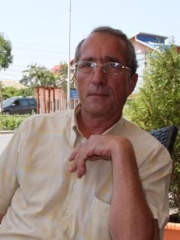
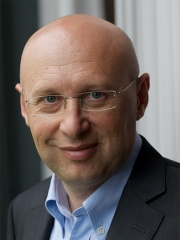
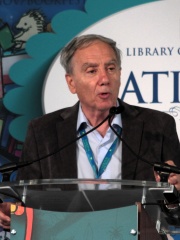
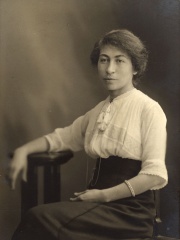
The Most Famous
PHYSICISTS from Romania
This page contains a list of the greatest Romanian Physicists. The pantheon dataset contains 851 Physicists, 3 of which were born in Romania. This makes Romania the birth place of the 29th most number of Physicists behind Slovakia, and Azerbaijan.
Top 5
The following people are considered by Pantheon to be the most legendary Romanian Physicists of all time. This list of famous Romanian Physicists is sorted by HPI (Historical Popularity Index), a metric that aggregates information on a biography’s online popularity.

1. Valentin Ceaușescu (b. 1948)
With an HPI of 62.98, Valentin Ceaușescu is the most famous Romanian Physicist. His biography has been translated into 20 different languages on wikipedia.
Valentin Ceaușescu (born 17 February 1948) is a Romanian physicist. He is the eldest and only surviving child of former communist President Nicolae Ceaușescu and Elena Ceaușescu.

2. Stefan Hell (b. 1962)
With an HPI of 55.59, Stefan Hell is the 2nd most famous Romanian Physicist. His biography has been translated into 56 different languages.
Stefan Walter Hell (German pronunciation: [ˈʃtɛfan ˈhɛl] : born 23 December 1962) is a Romanian-German physicist and one of the directors of the Max Planck Institute for Multidisciplinary Sciences in Göttingen, and of the Max Planck Institute for Medical Research in Heidelberg, both of which are in Germany. He received the Nobel Prize in Chemistry in 2014 "for the development of super-resolved fluorescence microscopy", together with Eric Betzig and William Moerner.

3. Mario Livio (b. 1945)
With an HPI of 49.11, Mario Livio is the 3rd most famous Romanian Physicist. His biography has been translated into 17 different languages.
Mario Livio (born June 19, 1945) is an astrophysicist and an author of works that popularize science and mathematics. For 24 years (1991–2015) he was an astrophysicist at the Space Telescope Science Institute, which operates the Hubble Space Telescope. He has published more than 400 scientific articles on topics including cosmology, supernova explosions, black holes, extrasolar planets, and the emergence of life in the universe.[1] His book on the irrational number phi, The Golden Ratio: The Story of Phi, the World's Most Astonishing Number (2002), won the Peano Prize and the International Pythagoras Prize for popular books on mathematics.

4. Ștefania Mărăcineanu (1882 - 1944)
With an HPI of 48.15, Ștefania Mărăcineanu is the 4th most famous Romanian Physicist. Her biography has been translated into 18 different languages.
Ștefania Mărăcineanu (Romanian pronunciation: [ʃtefaˈni.a mə.rə'ʧi.ne̯a.nu]; June 18, 1882 – August 15, 1944) was a Romanian physicist. She worked with Marie Curie studying the element named for Curie's homeland Polonium. She made proposals that would lead to Irène Joliot-Curie's Nobel Prize. Mărăcineanu believed that Joliot-Curie had taken her work on Induced radioactivity to gain the prize.
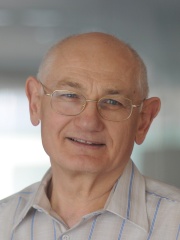
5. Mordehai Milgrom (b. 1946)
With an HPI of 47.68, Mordehai Milgrom is the 5th most famous Romanian Physicist. His biography has been translated into 15 different languages.
Mordehai "Moti" Milgrom is an Israeli physicist and professor in the department of Particle Physics and Astrophysics at the Weizmann Institute in Rehovot, Israel.
People
Pantheon has 5 people classified as Romanian physicists born between 1882 and 1962. Of these 5, 4 (80.00%) of them are still alive today. The most famous living Romanian physicists include Valentin Ceaușescu, Stefan Hell, and Mario Livio. The most famous deceased Romanian physicists include Ștefania Mărăcineanu. As of April 2024, 2 new Romanian physicists have been added to Pantheon including Ștefania Mărăcineanu, and Mordehai Milgrom.
Living Romanian Physicists
Go to all RankingsValentin Ceaușescu
1948 - Present
HPI: 62.98
Stefan Hell
1962 - Present
HPI: 55.59
Mario Livio
1945 - Present
HPI: 49.11
Mordehai Milgrom
1946 - Present
HPI: 47.68

